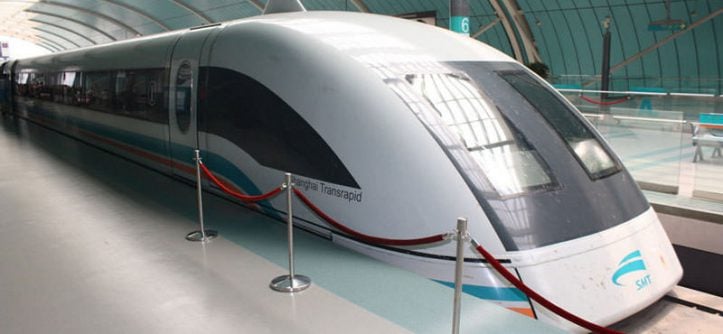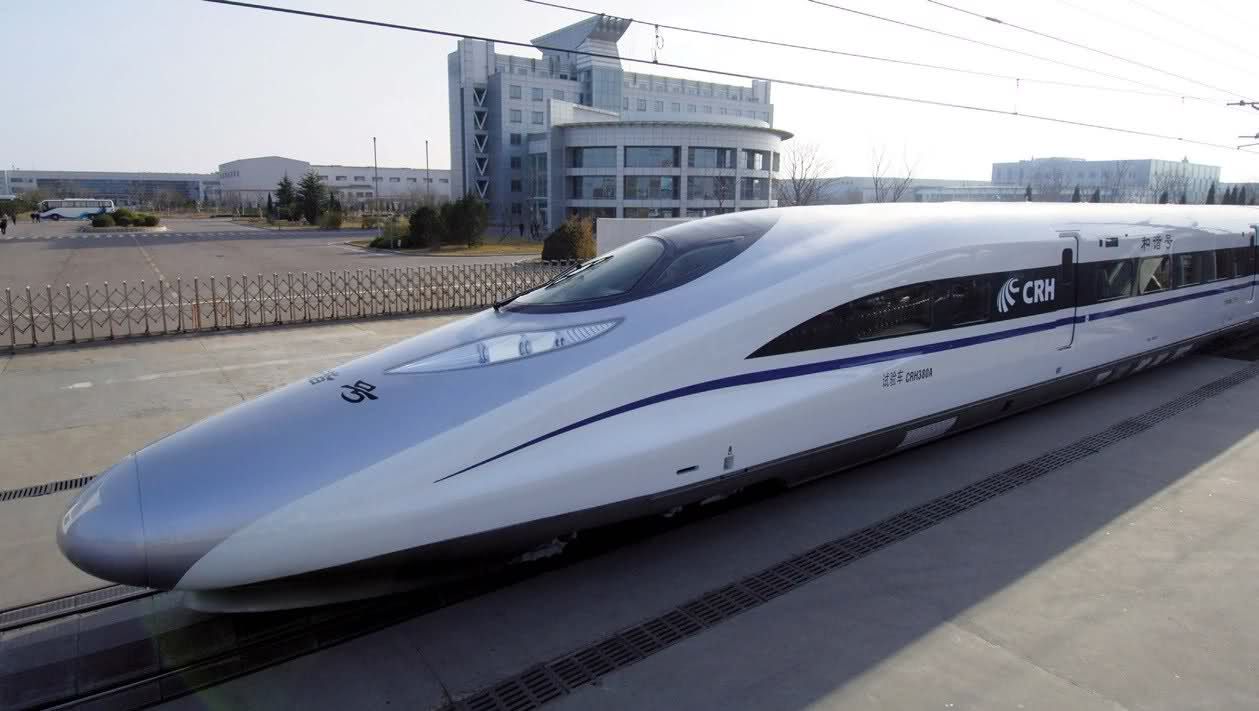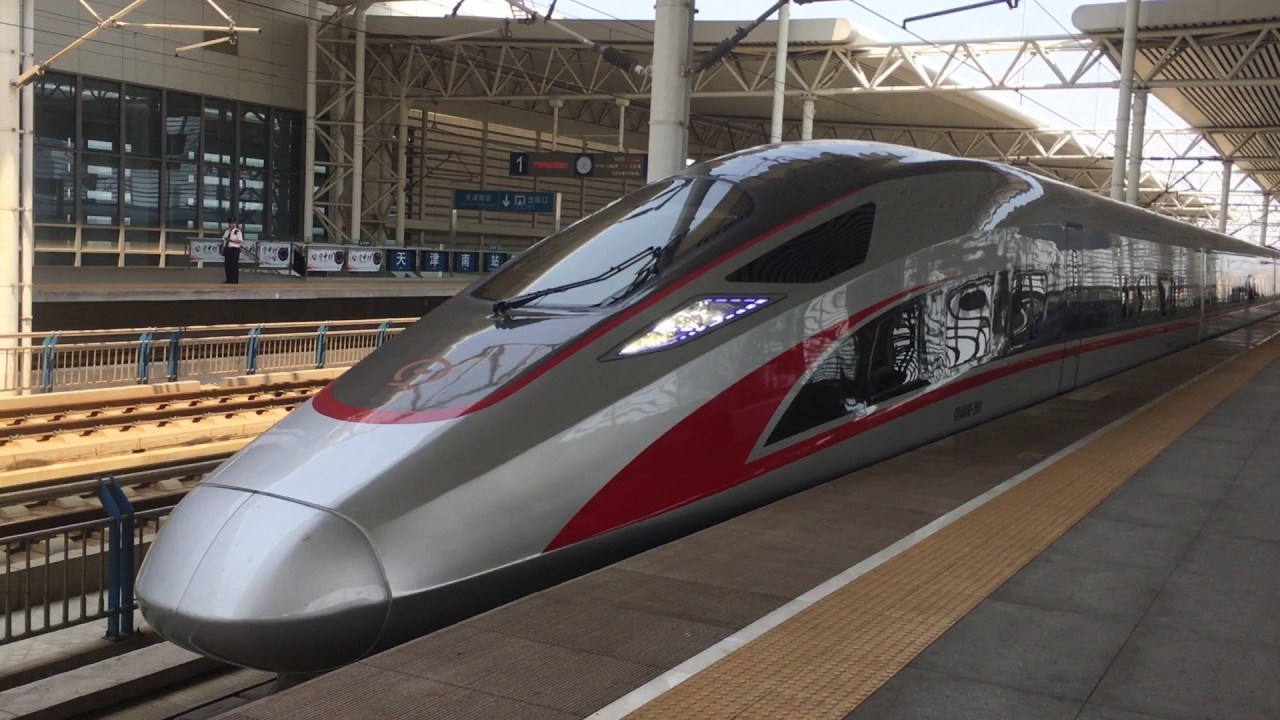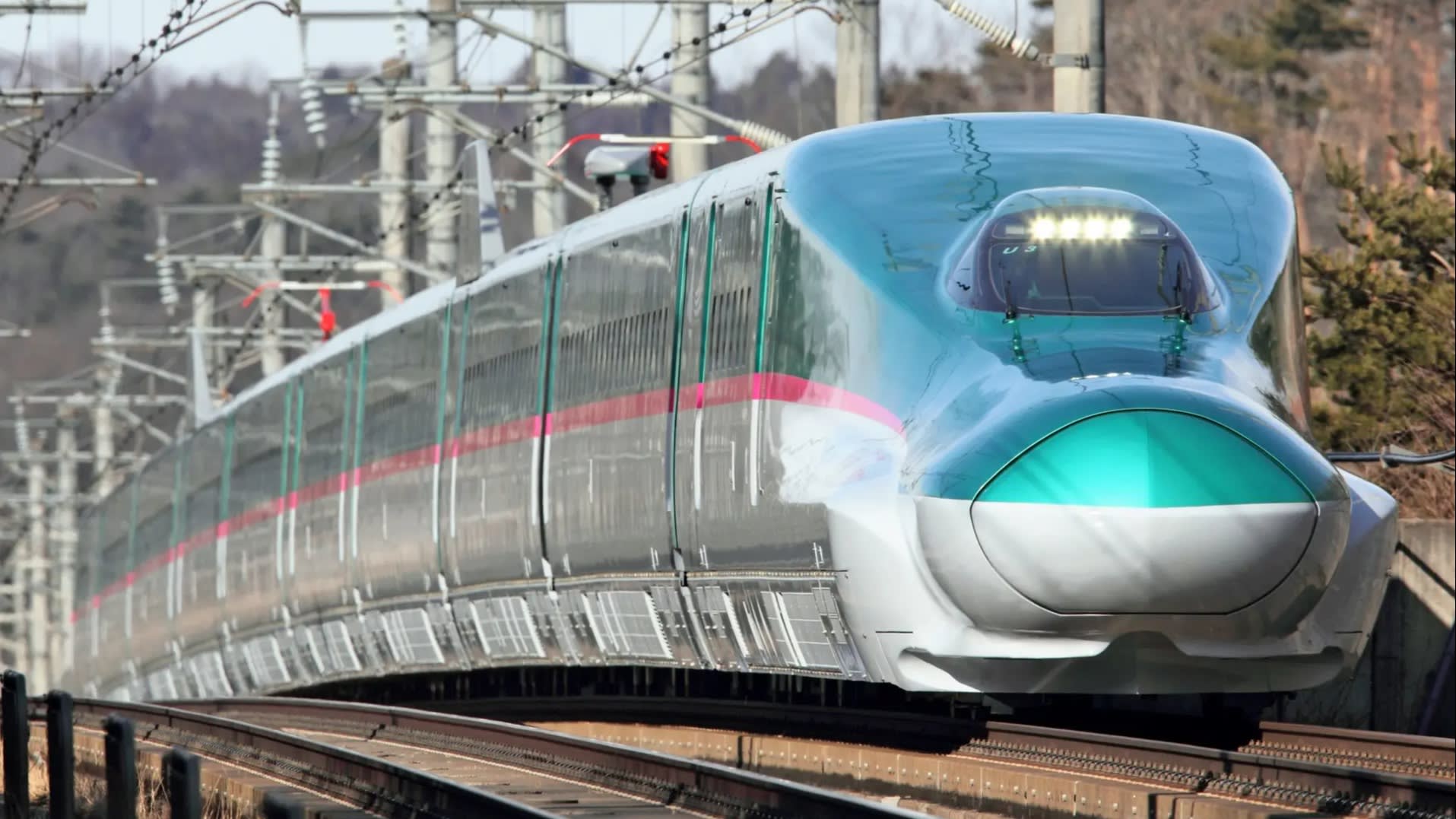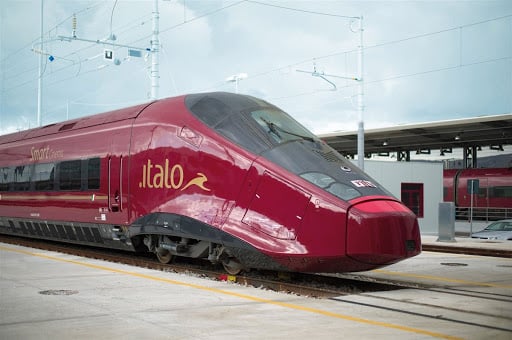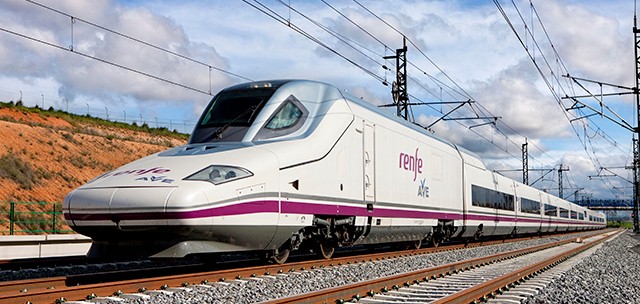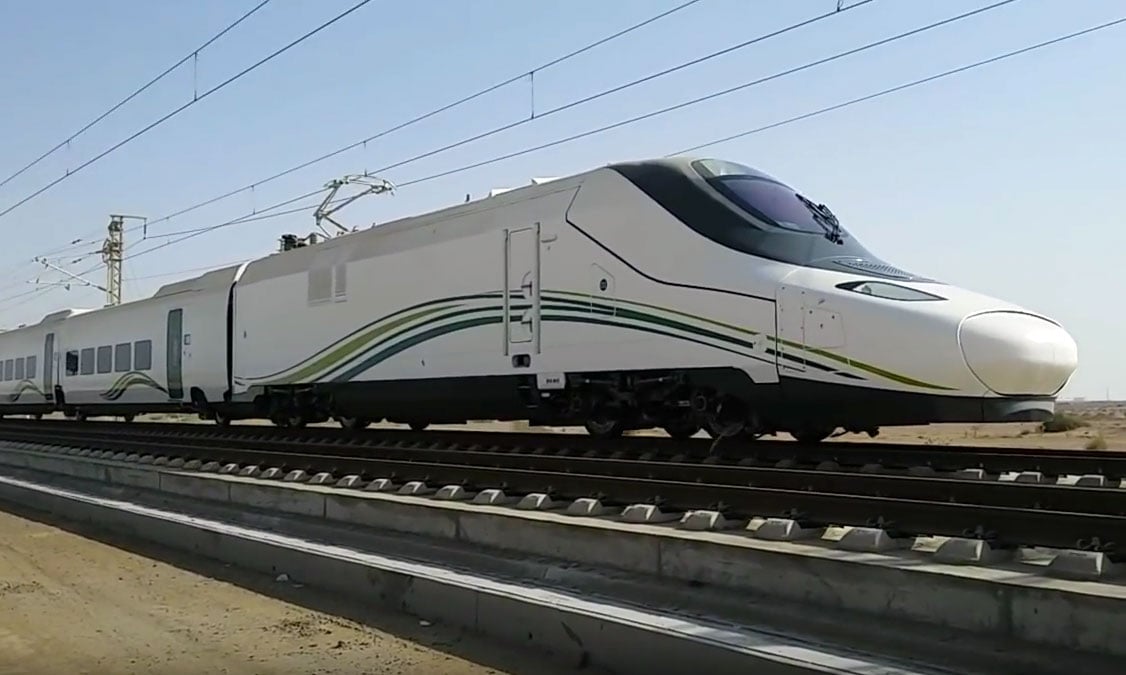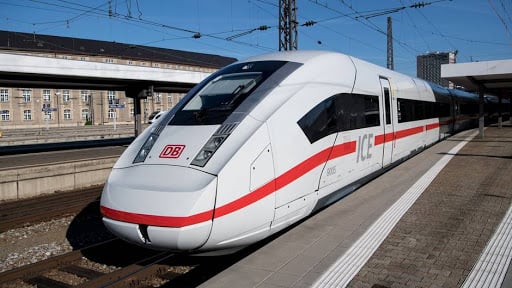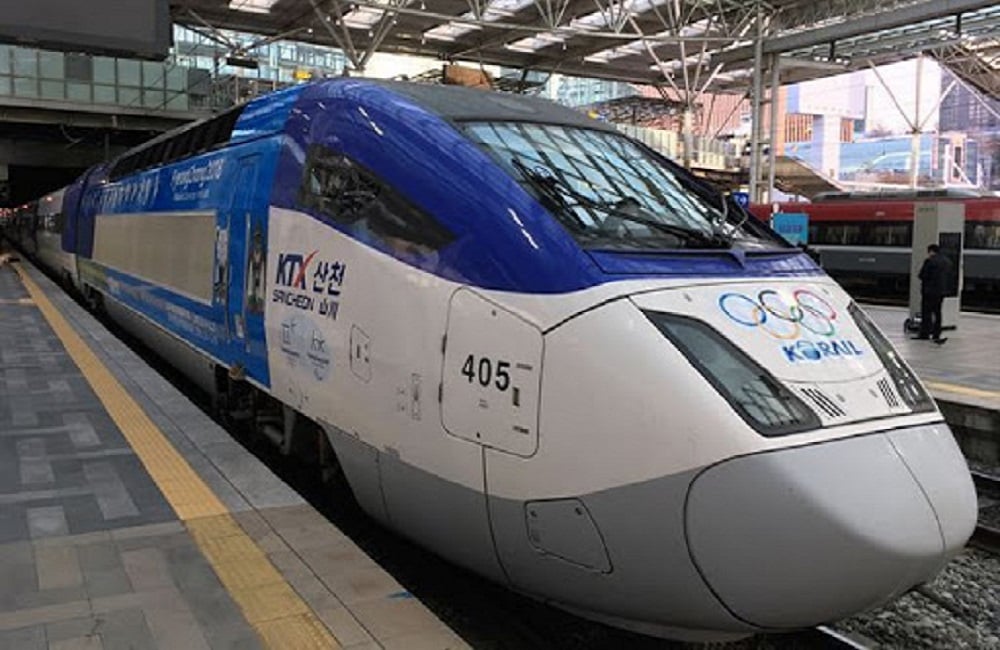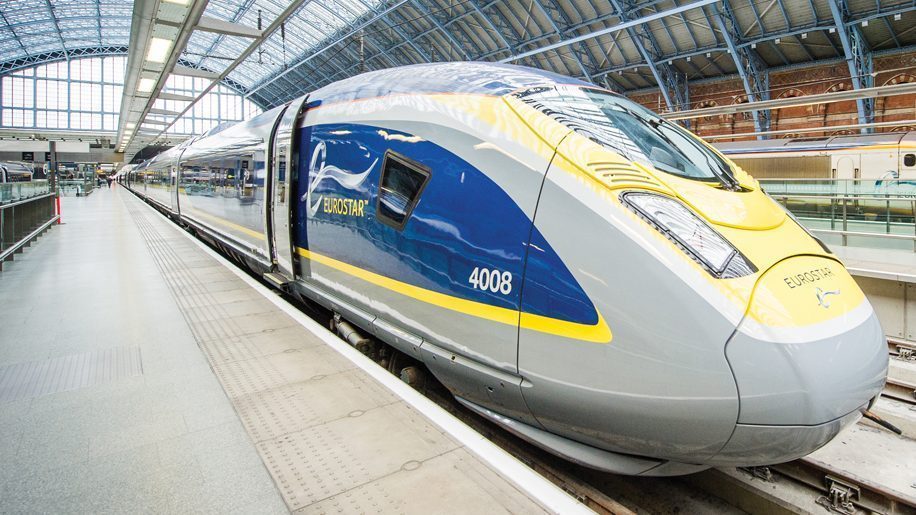10 Fastest Trains in the World – High-Speed Trains in 2022
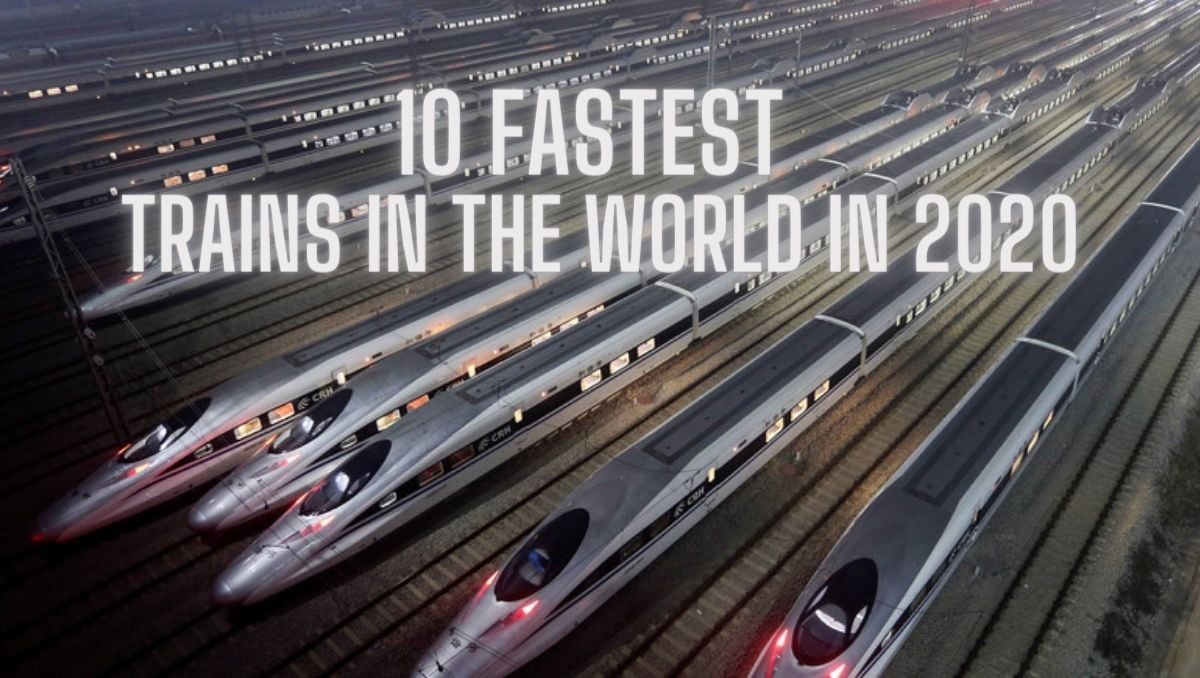
Trains are much safer and comfortable to travel if we compare them with road vehicles, passenger planes, or cruises. Now with the latest technologies, high-speed trains minimize the amount of journey time and also cost-effective to travel long distances on trains instead of planes.
The world has changed a lot since the introduction of the first high-speed rail in Japan on the Tōkaidō Shinkansen line in 1964. The 0 Series Shinkansen had an initial top speed of 210 km/h (130.5 mph). There are now 26 countries with high-speed rail networks, and many more are planning to have one in the near future. In this list, you will find the record speed of commercial operation in each country.
China is a world leader for many things and that includes high-speed trains. Still, the fastest trains in the world are not without danger. Through advanced technological developments, some HSRs are exceptionally fast. Recently, Japan tested its fastest ALPHA-X train in 2016, and we can expect from 2046, Japanese railways will operating train. Europeans and Asians currently operate the fastest high-speed trains in the world. Fastest trains list is below
Here are the Top 10 Fastest Trains in the World 2020
1. Shanghai Maglev: 267 mph, China
China has the world’s fastest commercial maglev service in operation, which reaches 267mph (431 km/h) on its 18.6 miles (30km) journey between Shanghai’s airport and city center. Shanghai Maglev, with the highest operating speed, its the fastest train in the world. Shanghai Maglev Transportation Development Co. operates this service. MagLev is an abbreviation for Magnetic Levitation, which is a method by which an object with only magnetic fields is suspended. The magnetic force counteracts the gravitational pull of the earth (technically float on air). Shanghai Maglev is doesn’t have wheels and floats between the train and the track on the magnetic ground. This electromagnetic push allows the magnetic levitation train to travel over the path with the powerful magnates, as no train-track contact occurs. In just 4 minutes, Shanghai Maglev could achieve its top speed.
The world’s fastest train isn’t the newest, the shiniest, or even the one with the most expensive tickets. Charging $8 per person, per ride, the Maglev runs the nearly 19 miles from Shanghai’s Pudong International Airport to the Longyang metro station on the outskirts of Shanghai. The Shanghai maglev public service began its service on 1st January 2004. It operates between Pudong International Airport and Outskirts of Shanghai Long Yang Road. Shanghai maglev train has a total capacity of 574 passengers. The entire journey of 20 miles (32.19 km), Shanghai Maglev takes only 7 minutes and 20 seconds. As such, the bulk of the passengers since its debut have been travelers on their way to and from the airport, cameras out and ready to snap a photo of the speed indicators when the train hits the high speed.
Shanghai Maglev tops the list with its maximum operating speed of 430km/h and an average speed of 251kmph. It runs on the 30.5km Shanghai Maglev Line, which is the first commercially operated high-speed magnetic levitation line, extending from Longyang Road Station of Metro Line 2 and ending at Shanghai Pudong International Airport.
2. Harmony CRH 380A: 236.12 mph, China
China has some of the fastest trains in the world, including the Harmony CRH 380A. The CRH 380A was put into operation in October 2010. It operates from Beijing to Shanghai and provides daily service along with Wuhan to Guangzhou route.
Harmony CRH 380A, with a maximum operational speed of 380kmph, is currently the second-fastest operating train in the world. The electric multiple units (EMU) set a record by speeding at 486.1kmph during its trial operation on the Shanghai-Hangzhou intercity high-speed railway in December 2010.
The trains are in regular service on the route between Shanghai and Nanjing.
The CRH 380A trains have low-weight aluminum alloy bodies and fish-head fronts. These trains also offer a VIP sightseeing section near the driver’s cabin which shows a view of the running train – great for those travelers who are particularly interested in rail travel.
3. Fuxing Hao CR400AF/BF: 249 mph, China
Fuxing Hao is a new high-speed bullet train family designed and manufactured by the Chinese company CRRC in collaboration with China Railway. China now owns the fastest commercial long-distance high-speed trains in the world. The duo of Fuxing Hao is the fastest non-maglev trains operating in the world. Operated by China Railway, the standard version of the Fuxing Hao high-speed train was officially introduced into service on the Beijing-Shanghai high-speed railway line in June 2017. It is also the fastest train in China.
China wins again, also serving as home to the world’s fastest non-maglev train currently in service. The name “Fuxing Hao” translates to mean “rejuvenation,” and each of the two trains has been branded with nicknames: CR400AF is “Dolphin Blue,” and the CR400BF is “Golden Phoenix.” The “CR” stands for China Railway. Both take just under five hours to zip up to 556 passengers each between Beijing South and Shanghai Hongqiao Station, easily halving the nearly 10-hour time it takes to ride the conventional, parallel rail line between these two megalopolises. The “Rejuvenation” also beats China’s next fastest train, the “Harmony” CRH380A; it has dazzled since 2010, with speeds of up to 236 mph on routes connecting Shanghai with Nanjing and Hangzhou, and Wuhan with Guangzhou.
Fuxing trains are expected to replace the Hexie Hao high-speed trains within the next ten years. Its Aerodynamic design reduces air resistance and enables the vehicle to reach higher operating speeds. It minimizes operating expenses by reducing the amount of fuel consumed. The length and width of the eight-car version are 209m and 3.36m respectively. It has a maximum axle load of 17t and can offer seating capacity for a maximum of 556 passengers.
The 16-car train has a length of 414.26m and a width of 3.36m and has a seating capacity for 1,200 passengers. Designed to run on the ballastless tracks of the high-speed rail network in China, Fuxing Hao aims to offer spacious interiors and a comfortable traveling experience for passengers.
The seats also feature adjustable headrests and are spaced to provide comfortable legroom for passengers. Occupants can charge their phones or laptops using the power outlets on the seats and have free access to the vehicle’s unlimited Wi-Fi connectivity. Completely automated doors provide a smooth entry and exit for passengers. The seat information display system displays the seat number and availability.
The Fuxing bullet train also features an on-board monitoring system that automatically reduces speed during emergency conditions. The performance of the train is monitored by approximately 2,500 monitoring ports.The average operating speed of the train is 350km/h, while the maximum speed is 400km/h. The train takes four hours to travel from Beijing to Shanghai, which is roughly one hour less compared to the next fastest train.
4. Shinkansen H5 and E5: 224 mph, Japan
E5 series trainsets were first introduced on the new Hayabusa services between Tokyo and Shin-Aomori from 5 March 2011, initially operating at a maximum speed of 300 km/h. From 19 November 2011, a total of six E5 series trainsets were in operation, with sets also used on some Hayate and Yamabiko services. Hayate services operated coupled with E3 series Komachi services and were limited to a maximum speed of 275 km/h.
The H5 series is a Japanese Shinkansen high-speed train type owned by Hokkaido Railway Company (JR Hokkaido) for use on Tohoku and Hokkaido Shinkansen services since 26 March 2016. Based on the earlier E5 series trains, a total of four 10-car sets were built by Hitachi and Kawasaki Heavy Industries at a cost of approximately 18 billion yen. The first two sets were delivered in October 2014. The H5 Series Shinkansen is a 10-car high-speed EMU in Japan. Built from 2014 to 2015 for JR Hokkaido, the H5 Series sets are the first Shinkansen sets to be built for JR Hokkaido and operate in a similar pool to the E5 Series sets.
Japan is celebrating the 54th anniversary of high-speed train travel this year, since it was way back in 1964 that the Hikari high-speed train launched service between Tokyo and Osaka, cutting travel time between the country’s two largest cities from nearly seven hours to a mere four by rail. The H5 and E5 series Shinkansen, respectively running the Tohoku and Hokkaido services, are two of the newer bullet trains on Japan’s tracks, and so far the fastest in regular commercial service in the country. It’s one of the fastest trains in Japan.
Externally, the H5 and E5 Series sets share the same design. However, an H5 Series set can be differentiated from an E5 Series set by the color of its bodyside stripe; the H5 Series Shinkansen has a lavender bodyside stripe, while the E5 Series has a pink stripe. The H5 Series sets also use LED headlamps as opposed to normal halogen bulbs as seen on the E5 Series sets; this gives the headlamps of the H5 Series sets a yellowish glow as opposed to the whitish glow of the E5 Series’ headlamps.
Heavily based on the E5 Series, the H5 Series is close to, if not completely identical in terms of technical specifications to the E5 Series cars and can also operate in multiples with them and the E6 Series. Just like the E5 Series, the H5 Series uses Hitachi IGBT variable frequency drives with a power output of 300kW (402 hp) per motor and has a top speed of 320 km/h (199 mph).
5. AGV, Italo, 223.6 mph, Italy
AVG Italo is the fastest operating train in Europe. This high-speed train has a maximum operational speed of 223.6 mph. But during the initial test, in 2007, the AVG train set a record speed of 356.6 mph. These multiple unit trains are built by the French manufacturing company Alstom. The AVG Italo started the service in April 2007. It operates between Rome and Naples. The passengers of AVG Italo trains can travel between these cities (distance – 140 mi) in just an hour. AVG Italo has a great Eco-friendly structure, 98% of its parts are recyclable. AVG Italo has 11 car seats.
Italo isn’t just another great European train. It’s a fleet of the newest generation of high-speed trains offered by NTV (Nuovo Trasporto Viaggiatori), the first private operator in the Italian high-speed rail network. It’s state-of-the-art train travel, redefining comfort, sustainability, and safety at every stop.
Designed by global leader Alstom, Italo benefits from their years of engineering expertise in the rail industry. Italo weighs less than many other trains, which means its energy-efficient and can reach speeds up to 186 mph. Italo offers travelers added comfort with larger windows, wider seats, more elbow room, smoke-free and air-conditioned cars, plus the convenience of WiFi. The multi-lingual staff and lounge access (in the stations) make every journey a pleasure. The network offers service from Venice to Rome (stops in Padua, Bologna & Florence) and from Milan to Salerno (stops in Bologna, Florence, Rome & Naples). So while there are a lot of places to enjoy the past of Italy, you’ll find this is one place you can enjoy the future.
All of Italo’s trains are considered high-speed trains covering long distances in speed. It’s able to reach a top speed of 360 km/h, though it’s often limited to 250 km/h (155 mph) on the Italian railway network. These trains connect Turin – Milan – Venice in just over 3 hours and can cover the Milan – Rome journey in just 2h and 40m. currently, Italo is the fastest train in Italy.
6. Renfe AVE: 217 mph, Spain
Barcelona to Paris in just six hours? That’s no problem for Spain’s Renfe AVE. This faster than fast rail bullet travels at 217 miles per hour, making the journey between the two cities enjoyable and quick. The fastest train of Spain is the Velaro E by Siemens, and it is used for long-distance services to major Spanish cities and beyond: traveling from Barcelona to Paris can now be accomplished on high-speed rail. Changes involved an up-rate to a higher power (8,800 kW or 11,800 hp) for higher acceleration and top speed to cover the 651 km (405 mi) between Barcelona and Madrid in less time, the ability to operate in a high range of temperatures, and a different interior.
The Renfe AVE has been certified to run at 350 km/h (220 mph). During testing between Madrid and Zaragoza, on 16 July 2006, train 005 reached 403.7 km/h (250.8 mph). This is both the current national rail speed record for Spain and also the current speed record for a normal series train in standard configuration.
On 23 December 2005, RENFE ordered a further 10 identical trains. Currently, all 26 trains from both orders have been delivered and are in service. The certified top speed of the AVE Class 103 is 350 km/h (217 mph), currently the highest for any train in the world, although the Alstom AGV, currently conducting extensive tests, aims for certification at 360 km/h (224 mph).
The train’s capacity of 404 passengers is split between three classes; with two coupled 8-car trains total capacity is therefore 808 passengers. In the end coaches (driving trailers), glass screens separate the driver and passengers, and allow passengers the same views as the driver, just as in the ICE 3 and other Velaros.
The AVE trains (Alta Velocidad Española) which means Spanish High Speed, as the name indicates, are the fastest Spanish Trains. Able to link Madrid and Barcelona in two hours and a half. The AVE routes have THE BEST options to travel across Spain in a fast, clean, and inefficient transportation means.
With a capacity between 316 and 405 passengers and at a speed up to 350km/h. The trains are adapted for disabled people and equipped with air conditioning and electrical sockets in the seats. Inside all trains, you can enjoy a coffee area where you will be able to buy your snacks and some drinks. Moreover, telephones are available in dedicated areas. Some AVE trains have WIFI.
7. Haramain Western Railway: 217 mph, Saudia Arabia
The Haramain high-speed railway (Haramain referring to Mecca and Medina Islamic holy cities), also known as the Western railway or Mecca–Medina high-speed railway, is a 453-kilometer-long (281 mi) high-speed rail line in Saudi Arabia. It links the Muslim holy cities of Medina and Mecca via King Abdullah Economic City, using 449.2 kilometers of mainline and a 3.75-kilometer branch connection to King Abdulaziz International Airport (KAIA), in Jeddah. The line is designed for a top speed of 300 kilometers per hour (190 mph).
Construction on the project began in March 2009, was officially inaugurated on 25 September 2018, and opened to the public on 11 October 2018. The railway is expected to carry 60 million passengers a year, including around 3-4 million Hajj and Umrah pilgrims, helping to relieve traffic congestion on the roads. It does not connect with the Mecca Metro.
The double-track line is electrified and the design speed is 350 kilometers per hour (220 mph). Trains run in service at 300 kilometers per hour (190 mph), and traveling the 78 kilometers (48 mi) between Jeddah and Makkah takes 43 minutes, while the 449 kilometers (279 mi) between Makkah and Medina takes about 2 hours. The track, rolling stock, and stations are designed to handle the temperatures. It is expected that the system will transport 60 million passengers a year on 35 trains, with a seating capacity of 417 per train.
Traveling the length of the route takes two and a half hours, compared to five hours by car. Speed isn’t the entire justification for the construction of this railway, however; the Haramain is expected to carry three million passengers a year, including many Hajj and Umrah pilgrims, relieving traffic congestion. Its the first fastest train in Saudi Arabia.
8. Deutsche Bahn ICE: 205 mph, Germany
The InterCity Express (ICE) is the high-speed train operated by Deutsche Bahn – the German railway company. These trains operate across and beyond Germany, connecting cities like Berlin, Cologne, and Munich. The modern ICE trains are one of the fastest ways to get around in Germany and its neighboring. It’s one of the fastest trains in Germany.
The Intercity Express (commonly known as ICE ) is a system of high-speed trains predominantly running in Germany. It also serves some destinations in Austria, Denmark, France, Belgium, Switzerland, and the Netherlands mostly as part of cross border services. It is the highest service category of rail and the flagship train of the German state railway, Deutsche Bahn. There are currently 259 trainsets in use. ICE trains are the highest category (Class A) trains in the fare system of the Deutsche Bahn. Their fares are not calculated on a fixed per-kilometer table as with other trains, but instead, have fixed prices for station-to-station connections, levied on the grounds that the ICE trains have a higher level of comfort. Traveling at speeds up to 320 km/h (205 mph), they are tailored for business travelers or long-distance commuters and are marketed by Deutsche Bahn as an alternative to flights.
The Deutsche Bundesbahn started a series of trials in 1985 using the InterCityExperimental (also called ICE-V) test train. The IC Experimental was used as a showcase train and for high-speed trials, setting a new world speed record at 406.9 km/h (253 mph) on 1 May 1988. The train was retired in 1996 and replaced with a new trial unit. Then new trains come with new technologies.
The train is lauded for its striking futuristic design along with the speed. The distinctively futuristic white and silver of the Inter-City Express, or ICE, combined with its sharp red cheatline, makes an impressive sight speeding through the scenic German countryside, especially on its newest route connecting Berlin and Munich. Similar to Spain’s Renfe AVE train, Germany’s fastest train is another Siemens design, the Velaro, and was built to fit through the Channel Tunnel. That’s a serious asset for DeutscheBahn’s long-term plans to operate these trains from Frankfurt to London.
9. Korail KTX: 205 mph, South Korea
Korea Train eXpress is South Korea’s high-speed rail system, construction began on the high-speed line from Seoul to Busan in 1992. KTX services were launched on April 1, 2004. The KTX-Sancheon is a South Korean high-speed train built by Hyundai Rotem in the second half of the 2000s and operated by Korail. With a top speed of 305 km/h (205 mph), the KTX-Sancheon is the second commercial high-speed train operated in South Korea and the first domestic high-speed train that is designed and developed in South Korea.
South Korea’s high-speed rail network is far from the newest (the KTX debuted in 2004), but it does hold its rank among the fastest. The latest route, opened just in time for the 2018 Winter Olympics, connects Incheon International Airport in the west to the coastal town of Gangneung in the east, stopping in Seoul along the way. The KTX cuts the transport time to reach the ski slopes of PyeongChang from six hours by conventional train to under two hours.
A high-speed train the KTX-I can reach a maximum scheduled speed of 205 mph. Its 20 cars can carry up to 935 passengers, and it is Korail’s primary workhorse. Beginning in 2006, the first car of KTX-I trains has served as a moving cinema, featuring first-run films.
the seats are ergonomically built to fit the body shape of most Koreans. In addition, the restrooms use a vacuum system to ensure they remain clean at all times. The KTX-Sancheon is designed to achieve a maximum speed of 205 mph. it’s among the fastest trains in South Korea.
10. Eurostar e320: 200 mph, United Kingdom
This is one of the high-speed trains operating in the UK at the moment – Eurostar. Connecting the UK to France via the Channel Tunnel, Eurostar trains (classes e300 and e320) travel at speeds of up to 200 mph along the route from London to Paris. Passengers enjoy comfortable modern seating and large windows to enjoy the UK and French scenery along the way.
Titled for its top speed of 320 mph (200 mph), the e320 series is a complete redesign of a Eurostar train in 22 years history. The speedier trains 20 km/hr faster than the earlier, e300 series are capable of trimming another 15 minutes off the already zippy Eurostar trips of around two hours between Brussels, Paris, and London (and Amsterdam, later this year). Since Eurostar delivers its passengers right to the center of each city, it’s a wonder anyone still flies between the cities.
With a traction power of 16,000kW, Eurostar e320 can reach a maximum operating speed of 320km/h (200mph). It is capable of carrying more than 900 passengers as a result of the 20% capacity boost given to it, compared to the existing 28 Eurostar trains which carry 750 passengers. The entire propulsion system and technical modules are distributed under the floor over the entire length of the train, providing more space for passengers. The train’s roof is equipped with eight pantographs for dealing with Europe’s different power systems and contact line types.
The Eurostar e320 train is also fitted with special fire extinguishing equipment and fireproof doors and is designed to be operable for 30min under its own power to exit a tunnel in the event of a fire. The e320s can carry 900 passengers, percent. Furthermore, the train can reach speeds of 200 mph. The look will beautiful as well with external livery and interiors designed by Pininfarina, an Italian design house, known for car designs. Energy efficiency and enhanced passenger experience are the goals. The Eurostar fleet will feature free Wi-Fi throughout and a broader range of information and entertainment options including live news feeds and weather reports as well as a collection of destination guides. The e320s will also feature more space per seat with each seat equipped with power points and a USB socket as well as a newly designed bar buffet, ergonomically designed reclining seats, and increased luggage areas. It is also the fastest train of the United Kingdom to connecting other countries.
Conclusion
Technology had improved exponentially but there is still some controversy over which form of transportation is more fuel-efficient, trains or cars, the amount of smog and pollution released into the city is much less with a high-speed train than with the number of cars necessary to transport the same amount of people. Riding a train instead of driving frees up your attention and time to focus on the things you want – from getting more work done to getting more downtime to catch up on your reading. . Also since a single train track can carry the same amount of people as a 10 lane highway, high-speed trains could help relieve some of that traffic jam.
Also, trains are a comparatively safer form of traveling as thousands of people die each year in automobile accidents, but trains are the safest ones we currently have. Modern train designs, like new cars, are safer and more practical. They are strong yet light, allowing them to accelerate quickly but also protect passengers better in case of a crash. These trains have a low center of gravity and sophisticated suspensions that allow faster running through curves and give a smoother ride. They will make your trip more enjoyable, and be more reliable, too.
Also Read: Top 12 Largest Stock Exchanges of the World in 2020
PTA Taxes Portal
Find PTA Taxes on All Phones on a Single Page using the PhoneWorld PTA Taxes Portal
Explore NowFollow us on Google News!